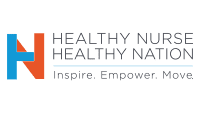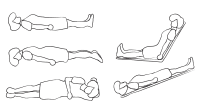A simple but structured process ensures effective communication.
Involving patients’ families in the perioperative process is crucial for family-centered care, but the COVID-19 pandemic has impeded their presence as a result of physical distancing. Many facilities have restricted visitors to maintain staff and patient safety, which means patients arrive in healthcare settings without their families by their side.
In April 2020, our organization, like many others in the nation, implemented visitor restrictions in the preoperative (pre-op) and postanesthesia care unit (PACU) areas. Patients who will be discharged after the procedure are required to bring a family member as their designated driver on the day of their procedure, but these individuals must wait in the main lobby or their car, as do family members of patients who will be admitted after surgery. To help both patients and families, we developed The SCOOP, a simple but structured process used to maximize family involvement when restrictions are in place.
The SCOOP
The SCOOP ensures three-way communication among the nurse, the patient, and their family during discharge or transfer.
S—Seek permission from the patient
The first step is to seek permission from the patient to involve their family in care by sharing the discharge summary and including them in discharge teaching; permission is at the patient’s discretion. The best time to seek permission is during the preoperative phase, either during pre-admission or in the pre-op on the day of the procedure.
The pre-admission nurse or the pre-op nurse educate patients about SCOOP, explaining that it’s a solution designed to overcome visitor restriction challenges. After permission is granted, the nurse verifies the family member’s phone number and, for patients who will be discharged, clarifies if that family member is the caregiver and the driver who should be called when it’s time for the patient to leave the facility.
The nurse then completes the SCOOP communication sheet, noting the patient’s permission and correct contact information. The sheet is part of the patient’s health record so that PACU nurses know they can call families and involve them in the discharge or transfer process.
C—Calling the family
When the patient is ready for either discharge home or transfer to an inpatient floor, the PACU nurse reminds the patient that they will call their family. In our organization, we use a hands-free communication badge that dials outside phone numbers and allows for three-way communication with the nurse, patient, and family member.
Other communication devices, such as smartphones, tablets, or portable phones, also could be used; the key is to have the three-way communication, which allows firsthand information transfer to both the patient and family. If someone has a question, everyone can hear it and the nurse’s response. Three-way communication also allows the nurse to verify that the patient and the family understand the information.
O—Opportunity for the RN to teach
When the call is established, the nurse uses AIDET®, developed by the Studer Group, to guide the interaction:
- Acknowledge the family.
- Introduce themselves.
- Provide an approximate Duration for the call.
- Explain the reason for the call, for example, discharge instructions.
- Thank them for their time and presence to support the patient.
The nurse also follows AIDET for patients transferring to an inpatient floor, but the message is geared toward giving a general overview of the patient’s condition, providing a room number for the floor, and explaining the inpatient visitor policy.
When providing discharge instructions, nurses speak clearly, slowly, and audibly, while avoiding medical jargon. They share detailed aftercare instructions, including activity, diet, pain management, possible anesthesia side effects, and potential complications. They also provide printed information patients and families can reference at home. Patients and families also are told that a nurse will call the patient within 24 hours after the procedure for follow-up.
O—Opportunity for patient and family to ask questions
Patients and families are given the opportunity to ask questions and have any of their aftercare concerns addressed. The interaction is a dialogue to ensure information is clarified and instructions are understood.
Nurses actively listen, provide appropriate responses, and use teach-back to verify understanding. With teach-back, the patient and family member are asked to verbalize discharge instructions in their own words to verify understanding. Teach-back is a useful tool to increase adherence to treatment plans, optimize patient outcomes, and improve patient satisfaction.
P—Prepare for exit
After discharge teaching is complete and all questions or concerns are addressed, the nurse prepares the patient to exit the facility. The nurse asks the family member to drive up to the curb; during this time, discharge paperwork is finalized and the patient gets dressed. The nurse or a designee takes the patient in a wheelchair out to the curb and waits until they safely enter the vehicle.
For patients transferring to the floor, the nurse reminds the family of the floor and room number and estimates how long the transfer will take.
Implementing The SCOOP
We suggest using Kotter’s eight-step model of change as a framework to guide the implementation of The SCOOP. (See Making a change.) Possible outcome measures for assessing its effectiveness include scores for the patient experience and questions that address family involvement in care. Process measures could include auditing or observing nurses as they implement The SCOOP and using a survey to assess staff satisfaction. We look forward to collecting this data in the future, but anecdotal reports indicate high staff satisfaction.
Making a change
Kotter’s eight-step change model was used to guide the implementation of The SCOOP.
- Create a sense of urgency. The nurse leaders recognized and communicated the urgent need for a strategy and plan to involve families in patient care despite physical distancing during the pandemic.
- Build a powerful team. We formed a team that included two staff nurses and two nurse leaders (the authors of this article). This team had the power and desire to lead the initiative.
- Develop a vision. Our vision to involve families in care despite restricted visitor policies inspired the development of SCOOP. We then brainstormed and strategized how to implement the process.
- Communicate for buy-in. The clinical nurses on the team created an educational handout that they used to teach their peers. The nurse leader reinforced the teaching during huddles and staff meetings. We also asked the marketing team to create large posters to place in each department.
- Empower the team for action. Our plan was inexpensive to implement; we used existing communication devices, set a date, and implemented the process. The department nurses are empowered to provide real-time feedback so we can refine and streamline the process as needed.
- Celebrate short wins. We celebrated with all department staff when the posters arrived. We also celebrate when staff nurses share stories or experiences that demonstrate SCOOP’s effectiveness.
- Don’t let up. We continue to reinforce SCOOP during huddles, staff meetings, and nurse leader rounds.
- Make the change stick. We continue to work on this project and plan to have outcome and process measures to support its effectiveness.
A simple solution
Anesthetic agents, stress, and anxiety related to a procedure can temporarily compromise patients’ cognitive function and memory capacity. Family members, who also can be anxious about their loved ones, play a crucial role in supporting the patient and reinforcing discharge instructions when the patient goes home. The SCOOP is a simple strategy that can be used to enable family involvement during a time when they can’t be physically present at the bedside, easing both patient and family stress.
Editor’s note: This is an early release, web exclusive article that will appear in the upcoming January 2021 issue of the American Nurse Journal.
All authors work at PIH Health – Downey in Downey, California. Muriel Moyo is clinical director of the outpatient surgery center, PACU, and endoscopy. Cynthia Apodaca is a clinical nurse in PACU. Giselle Peralta is a clinical nurse in the outpatient surgery center. Julie Castillo is assistant director of the outpatient surgery center, PACU, and endoscopy.
References
Agency for Healthcare Research and Quality. Patient and family engagement in the surgical environment module: Facilitator notes. May 2017. ahrq.gov/hai/tools/ambulatory-surgery/sections/implementation/training-tools/pf-engagement-fac-notes.html
Agency for Healthcare Research and Quality. Use the teach-back method: Tool #5. Health Literacy Universal Precautions Toolkit. 2nd ed. September 2020. ahrq.gov/health-literacy/improve/precautions/tool5.html
American Association of Nurse Anesthetists. Discharge after sedation or anesthesia on the day of the procedure: Patient transportation with or without a responsible adult: Position statement and policy considerations. July 2018. aana.com/docs/default-source/practice-aana-com-web-documents-(all)/discharge-after-sedation-or-anesthesia-on-the-day-of-the-procedure.pdf?sfvrsn=ed4a5bb1_2
Croke L. Incorporating family visitation in the postanesthesia care unit. AORN J. 2019;109(4):P5-P6.
Engel K. Discharge instructions in the PACU: Who remembers? Agency for Healthcare Research and Quality. August 2013. psnet.ahrq.gov/web-mm/discharge-instructions-pacu-who-remembers
Hart JL, Turnbull AE, Oppenheim IM, Courtright KR. Family-centered care during the COVID-19 era. J Pain Symptom Manage. 2020;60(2):e93–e97.
Kotter JP. Leading Change. Brighton: Harvard Business Review Press; 2012.
Stannard D, Krenzischek D. PeriAnesthesia Nursing Care: A Bedside Guide for Safe Recovery. 2nd ed. Burlington: Jones & Bartlett Learning; 2016.
Struder Group. AIDET patient communication. n.d. studergroup.com/aidet


















